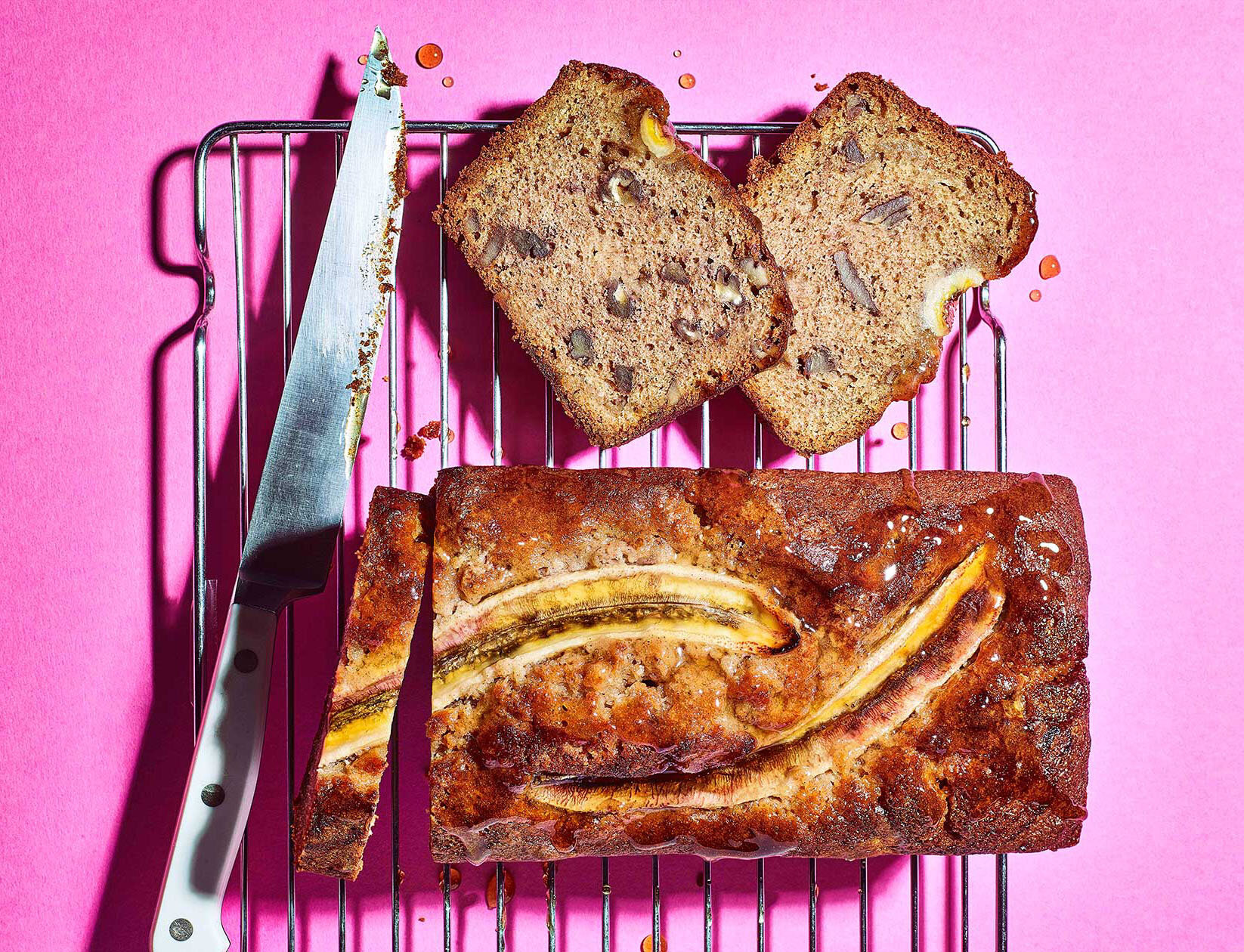Lockdown loaf: The history of banana bread
The whole universe is baking banana bread right now. Searches for the fruit loaf have skyrocketed on Google, with countless recipes, multiple think-pieces and even an article asking psychotherapists to explain the trend cropping up online. One site even said banana bread is having a ‘quarenaissance’. But that site was Yahoo! so nobody read it.
This isn’t the first time banana bread has gained popularity during a time of crisis. In fact, it’s how modern banana bread came to be.
A New York City bread line in 1931. Source: The Guardian
In 1929, the US economy crashed, leaving the country in dire straits and causing America’s Great Depression. By 1933 around 15 million Americans were unemployed and those that were in work saw their wages shrink by a third. The USA was the worst affected country but it also marked a decline in living standards around the world.
The Great Depression became a time of food scarcity for most Americans and emergency food programs were set up to prevent starvation. By 1931, breadlines in New York City were giving out 85,000 meals a day. In some places, surplus agricultural products were given to the poor and a small-scale ‘food-stamp’ program was set up for federal workers in need.
Andrew Coe and Jane Ziegelman, authors of A Square Meal: A Culinary History of the Great Depression, say that loaves became a popular food, especially those that included cheap additions which helped to stretch ingredients out. Recipes appeared for peanut loaf, liver loaf and bean loaf. Quick breads, breads made without yeast, were also popular, as they required less time to rise.
Balanced Recipes (1933). One of the first cookbooks to contain a recipe for banana bread. Source: Pinterest.
It was in this climate that banana bread (or loaf) - a type of quick bread - became increasingly popular. Some historians have claimed that it was thrifty housewives looking to use up their overripe bananas who came up with the recipes for modern banana bread. (I say ‘modern’ because bananas had been widely used in recipes, including cakes, long before the 1930s). It’s more likely, however, that corporate kitchens developed and promoted the recipe, to reduce food waste and help homecooks add a nutritional boost to their baking. One of the earliest printed recipes appeared in 1933 in a cookbook called Balanced Recipes (which you can find below).
Another key ingredient also played a part in the rise of banana bread; baking powder. Baking powder was invented in 1856 by a Harvard chemistry professor - who called in ‘yeast powder’ and began to be commercially produced at the start of the 1900s. During the Great Depression, baking powder companies ‘engaged in a cut throat price war for control of the national market’, driving down prices and making ‘quick breads’, like banana bread, more accessible to the home cook.
This combination of necessity and ingredients helped popularise banana bread across America and eventually many parts of the world. So the next time somebody tells you you’re jumping on the latest trend by baking a lockdown loaf, you can tell them you’re simply engaging with an activity that has historical precedence. And also, who cares, banana bread is delicious.
Banana bread recipes
Below is the recipe that appeared in 1933’s Balanced Recipes, in case you fancy trying it out yourself. But if you’re looking for a more up-to-date recipe, my friend and baker-extraordinaire, Barbara Speed, recommends this tahini version. Or, if you’ve got another lockdown favourite on the go, you can make this sourdough version.
Banana nut bread
Recipe makes 1 large loaf, 8x4x2
Temperature: 350 degrees F.; Time: about 1 1/4 hours
2 cups Pillsbury's Best flour
1/2 teaspoon soda
1/2 teaspoon salt
2 teaspoons baking powder
1/2 cup chopped nutmeats
1/2 cup Pillsbury's Wheat Bran
1/4 cup shortening
1/2 cup sugar
2 eggs
2 tablespoons thick sour cream
1 1/2 cup mashed bananas
1. Sift flour, soda, salt and baking powder together; stir in nut meats and wheat bran.
2. Cream shortening and sugar. Add eggs, one at a time, beating thoroughly after each addition.
3. Combine mashed bananas and sour cream; add alternately with flour to first mixture.
4. Bake in a greased loaf pan lines with waxed paper, in a moderate oven.








